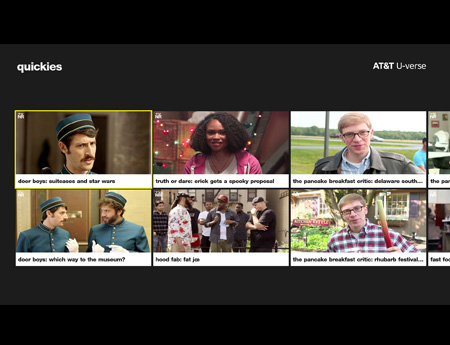Out With the Old, In With the New Facility

Like most potentially revolutionary events, this year’s biggest tech trends aren’t new. IP infrastructures, cloud-based TV delivery systems, programmatic advertising technologies and new broadcast transmission technologies have been percolating through the industry for a long while.
What makes them notable for 2015 is that they are developing much faster than many would have predicted even a year ago and they’re now on the verge of having a potentially revolutionary impact on basic infrastructure of broadcast and multichannel TV. Here are the developments the industry will keep close watch on.
IP, IP, IP. For many decades, basic broadcast technologies were based on expensive, custom-built infrastructures and hardware to handle the production and transmission of baseband video. This was extremely reliable—it was hard to knock a broadcast station off the air—but also very inflexible. Want to move to HD or launch a new channel? Sorry, you first have to tear out the hardware and upgrade your whole facility.
That slowed the pace of innovation and made it difficult to quickly adapt to new delivery platforms such as online or mobile video. To help change that, broadcasters have been relying more heavily on software and other technologies from the computer and Internet world to manage ad sales, video streaming and a host of other features for many years. But these efforts were generally bolted onto more traditional infrastructures.
Faced with pressure to expand their multiplatform distribution and to rapidly respond to new business opportunities, programmers are now taking a very different approach to their infrastructures. “IP, IP, IP is the focus,” says John Honeycutt, chief technology officer at Discovery Communications, who says it will speed up the pace of innovation and the launch of new services. “I don’t want hardware. I want software….We are encouraging all our vendors to help us replace all of these devices that require us to get back to SDI or baseband video.”
Cloud TV. Similar transformations are taking place among multichannel operators, who began testing TV Everywhere services in 2009 to deliver TV programming over IP networks to PCs, smartphones and tablets. As part of that effort, they’ve increasingly used cloud-based services to format the content for hundreds of different devices.
Broadcasting & Cable Newsletter
The smarter way to stay on top of broadcasting and cable industry. Sign up below
Building on those efforts, operators are now rolling out “cloud TV” so they can offer the full multichannel lineup, VOD and DVR recordings to multiple devices in the home, says Matthew Strauss, senior VP and GM of video services for Comcast Cable. “We now have in-home streaming available in about 75% of our homes and cloud DVRs in about 50%,” he says, with more to follow in 2015. “TV Everywhere and cloud TV are in many ways two sides of the same coin.”
As operators roll out more Internet-connected set-top boxes such as Comcast’ s X1, this will also allow them to rapidly upgrade their products, quickly introduce new apps or features and greatly improve the process of searching for new content. That will help them better compete with over-the-top providers by offering a much better user experience; ultimately, this same infrastructure will also allow them to add OTT services such as Netflix to their IP-connected boxes, something some European cable operators have already done.
Programmatic Ads. The sales side is also getting a big tech upgrade courtesy of the Internet world. While there is much confusion about programmatic ad technologies, they basically refer to systems that automate the process of delivering pinpoint-targeted ads to online and mobile viewers, frequently using real-time auctions.
This reduces wasted inventory and helps advertisers get a better return on their investments. But much work remains to be done on how these systems will be applied to the television world. Still, a number of networks, stations and operators, including ABC, NBC and the Tribune broadcast stations are trialing the technology, with more companies expected to follow.
That will make 2015 a crucial year for efforts to meld programmatic technologies into the $65 billion TV ad business. If all goes well, these approaches could help networks boost revenue from their digital offerings and from less valuable non-primetime dayparts; over time, it might provide a better way of targeting audiences and adding some of the most attractive features of Internet advertising to television.
ATSC 3.0. The Advanced Television Systems Committee is currently working on a new broadcast TV standard that will transform old-fashioned broadcasters into new media moguls, with capabilities for UltraHD TV, mobile broadcasts to cars speeding down the freeway, VOD, interactive TV, IP broadcasts and a number of things that have yet to be imagined.
It is, in short, a wonderful, potentially revolutionary technology. But revolutionary change comes with a price. TV sets or any other devices currently able to get ATSC broadcast signals won’t be able to receive ATSC 3.0. That means it will take many years for ATSC 3.0 sets to be available in most American homes, and that the industry will have to find some way to connect existing sets, which may be costly. Equipping 10 million over-the-air homes, for example, with a $30 to $50 dongle could cost over $300 million; billions more would be required if broadcasters hope to reach a larger share of TV homes.
Given those issues, it isn’t surprising that the industry hasn’t outlined convincing plans for making the transition. But broadcasters can’t wait much longer, given yet another pressing deadline. If the industry wants to launch ATSC 3.0 before the 2016 FCC spectrum auctions, some realistic plans for the transition will have to be drawn up in 2015.
